In this posting, we will use the Cloud Firestore of Firebase.
Cloud Firestore is a NoSQL database.
For focusing on Firebase usage, I'm not focusing on the React application.
Sample React Application
I made a React application for this practice.
Please make your own application.

Briefly explanation, If I click the Input button, the input message will be sent to the Firebase DB.
And the message will be shown below.
If I click the pencil icon, I can edit the message and will be updated the Firebase DB as well.
If I click the trash icon, the message will be deleted and Firebase DB as well.
Firebase Configuration
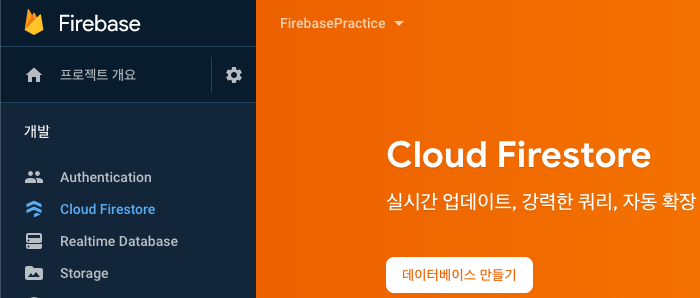
Go to the Cloud Firestore page and click the [Create Database] button.
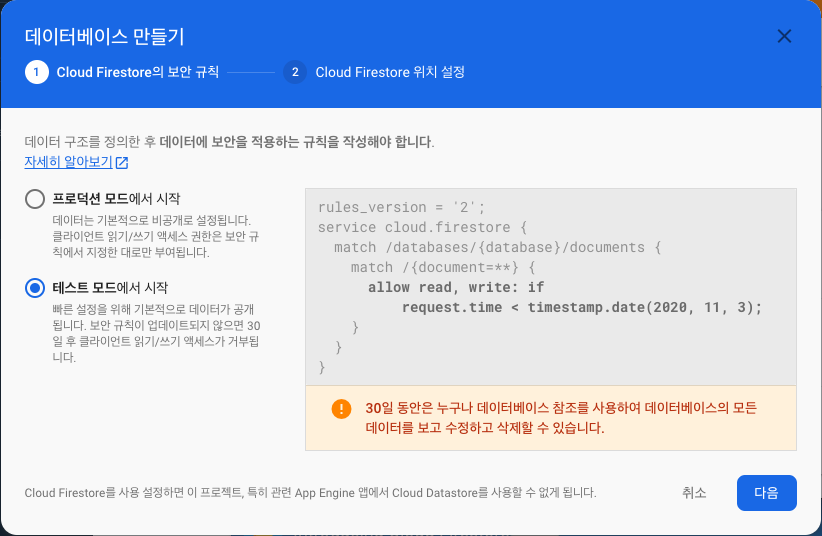
Select the mode which you want, and click the [Next] button.
I chose the test mode because I want to simply test.
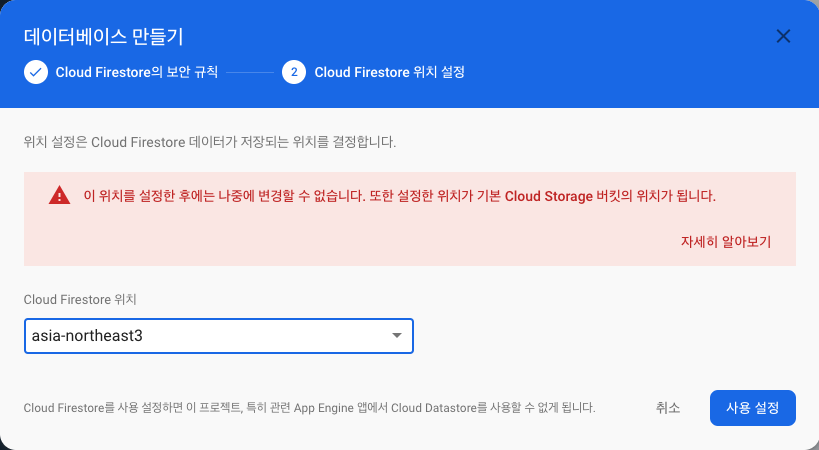
Select the location of the Cloud Firestore, and click the [Usage Setting] button.

Now, we can use Cloud Firestore.
Use Cloud Firestore in the React Application
Please find the config the Firebase with React in the below posting.
2020/10/04 - [Web/Etc] - [Firebase] Firebase Authentication with React
Now, add this code into the fbConfig.js.
import "firebase/firestore";
export const dbService = firebase.firestore();Now, we can use the Firestore.
Create a New Data and Add to Firestore
dbService.collection(Collection).add(Document)
You can add the data to the DB.
Collection is the name of the group of data, and the Document is a data.
Document consists of key-value pairs.
I used it like this.
const onInput = async () => {
const itemObj = { id: uuid(), message: newItem, createdTime: Date.now() };
await dbService.collection("items").add(itemObj);
setNewItem("");
};In the Firestore, it looks like the below.
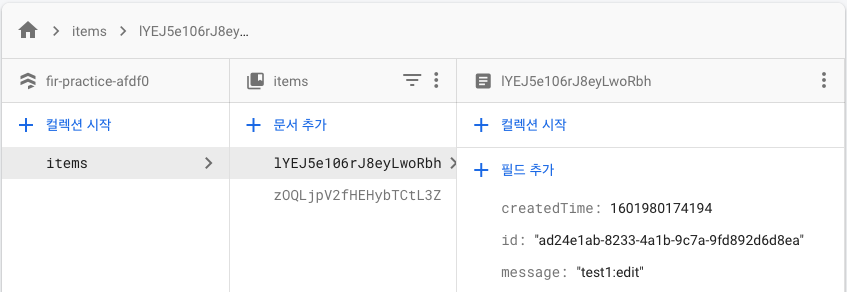
The name of the collection is items as I given.
Get Data from Firestore
you can get data from Firestore through onSnapshot function.
useEffect(() => {
dbService.collection("items").onSnapshot((snapshot) => {
const itemArray = snapshot.docs.map((doc) => ({
docId: doc.id,
...doc.data(),
}));
setItems(itemArray);
});
}, []);I used it with useEffect hooks.
doc.Id gives us the document's ID so we can access data with this.
I kept this ID for editing and deleting data.
Delete Data in Firestore
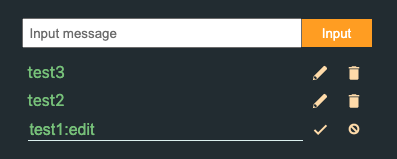
This is my test application.
If I click the trash icon, the data will be deleted in Firestore.
Delete data just call a delete function.
const onDelete = async () => {
await dbService.doc(`items/${itemObj.docId}`).delete();
};Edit Data in Firestore
Edit is also simple.
You just call the update function with data to update.
const onCheck = async () => {
await dbService.doc(`items/${itemObj.docId}`).update({
message: editItem,
});
setIsEdit(false);
};This is my test function.
The message field will be updated.
'Web > Etc' 카테고리의 다른 글
| [Svelte] Getting Started with VSCode (0) | 2021.09.14 |
|---|---|
| [Web] About Robots.txt (0) | 2020.10.07 |
| [Firebase] Firebase Authentication with React (1) | 2020.10.04 |
| [Nest] Unit Testing and E2E Testing (0) | 2020.10.03 |
| [Nest] Create a simple backend server (0) | 2020.10.02 |


댓글